On This Page:
Feeling anxious or fearful are normal human emotional reactions to frightening situations. Anxious feelings can be helpful, making someone more alert and responsive to their environment.
Fear can also be useful as it can signal imminent danger and allows the body to respond to increase chances of survival. Fear is an automatic alarm response that switches on when there is danger.
Although the biochemical reaction for fear may be the same, some people will experience the intensity of fearful situations differently than others.
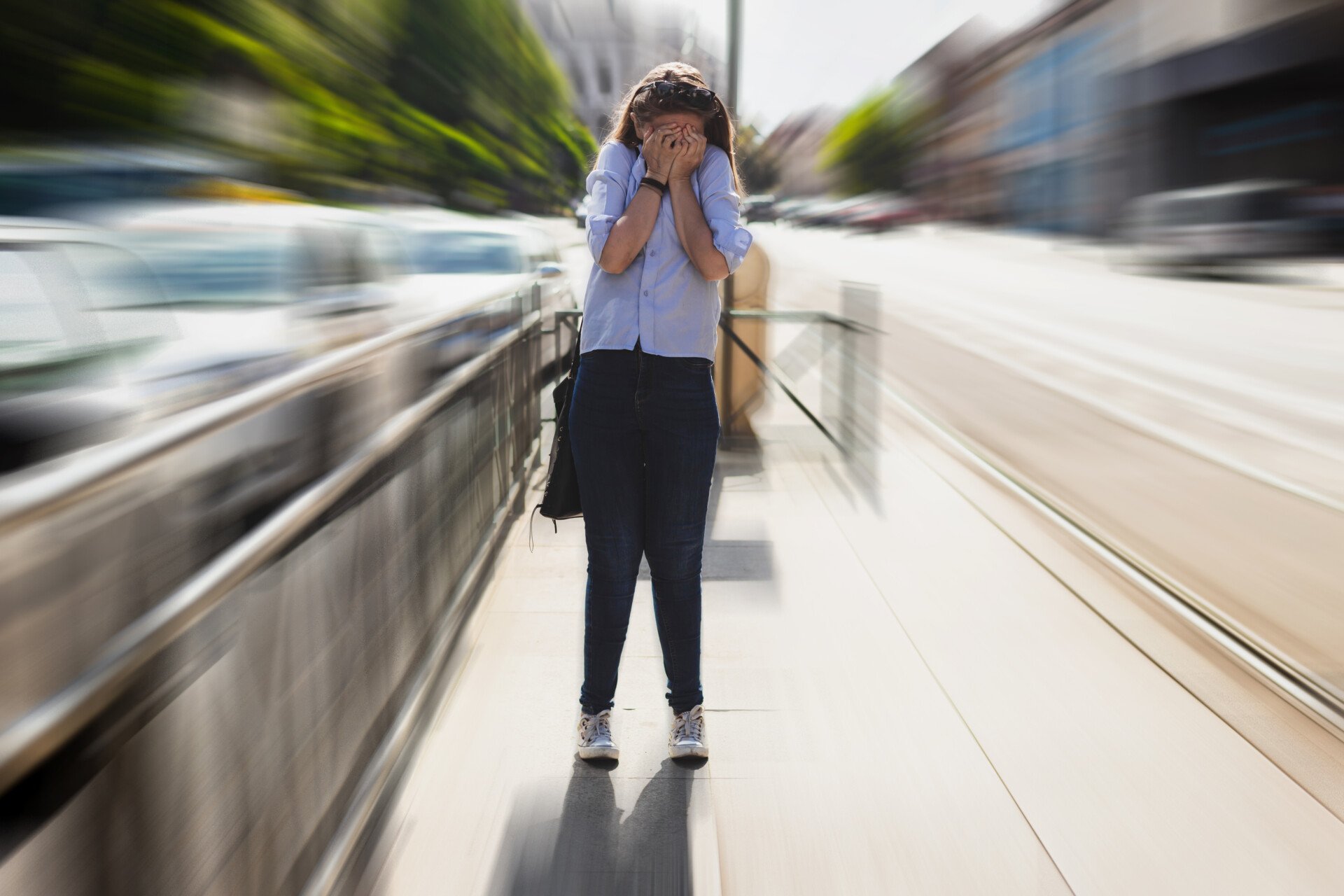
Panic disorder is a debilitating anxiety condition characterized by recurrent and unexpected episodes of intense fear and physical symptoms, such as rapid heart rate, shortness of breath, and overwhelming feelings of impending doom.
What is Panic Disorder?
Panic disorder is a type of anxiety disorder that is characterized by intense, recurrent, and unexpected panic attacks
When the body responds to danger with physical symptoms, this is known as the fight or flight response. Sometimes, however, it is possible to have an intense fear response when there is no apparent danger, almost like a false alarm that can happen when the person least expects it.
This response can be so intense that it results in a panic attack. A panic attack is a brief but extreme episode of overwhelming fear and intense physical and emotional reactions that one may have in response to a real danger. Still, it happens in situations most people would not be afraid of.
Panic disorder describes a condition where the person experiences unexpected panic attacks recurrently, with persistent worries about additional panic attacks that lead to maladaptive behavioral changes related to them.
These panic attacks can peak within 10 minutes and can be very frightening, and people experiencing an attack may feel a strong desire to escape the situation they are in.
Although panic attacks aren’t life-threatening, they can be very distressing and significantly affect the quality of life.
Most people are thought to experience a panic attack at least once in their lives, with the problem going away, usually once the stressful situation is over.
Panic disorder is thought to affect approximately 2.7% of the adult United States population each year, according to The National Institute of Mental Health.
The symptoms of panic disorder often appear in young adults between the ages of 20-24 years old, and the prevalence seems to be higher for females than males.
Types of Panic Attacks
For panic disorder, there are two main types of panic attacks: unexpected and expected.
Unexpected Panic Attacks
Those with panic disorder most commonly experience these unexpected panic attacks. These can occur suddenly, without warning or any known trigger.
These can even happen when the person is relaxed or emerging from sleep (nocturnal panic attack) and not experiencing anxiety.
‘At one point when I was talking (to my girlfriend) I thought ‘Oh I don’t feel good’… and then it was like this overwhelming feeling of stress… it happened all very quickly. Once you get that feeling, it just happens immediately.’
Matt
Expected Panic Attacks
Expected panic attacks are more likely to be predicted. They can often occur when exposed to a situation that the person finds fearful.
For instance, someone may have a panic attack when performing on stage or when giving a speech.
What Does A Panic Attack Feel Like?
There are many physical and emotional symptoms associated with panic attacks. The physical symptoms of panic attacks correspond to the feelings experienced during the fight or flight response but are more intense.
The emotional symptoms of panic attacks are usually extreme fear and anxiety.
The experience is different for everyone, and the symptoms can often vary. Typically, the symptoms are not proportionate to the level of danger in the environment.
A panic attack is a sudden episode of intense fear or anxiety that triggers severe physical reactions, such as a racing heart, sweating, trembling, shortness of breath, or a feeling of impending doom, even though there’s no real danger or apparent cause.
‘It always starts with a sense of doom and literal clouded vision for me that’s followed by a compression in my chest and a pretty severe compression in my heart. And then I get to a point where I feel literally locked, like even if I wanted to move my arms or my legs or walk away from a situation, that I couldn’t.’
Tony
Many people living with panic disorder describe feeling as though they are having a heart attack or on the verge of dying. The feeling may be so intense that they may seek emergency medical assistance, especially if they are unaware that they have panic disorder.
One of the worst reported feelings associated with panic attacks is the intense fear of experiencing another panic attack. Sometimes, even the fear of having another panic attack can trigger another for some people.
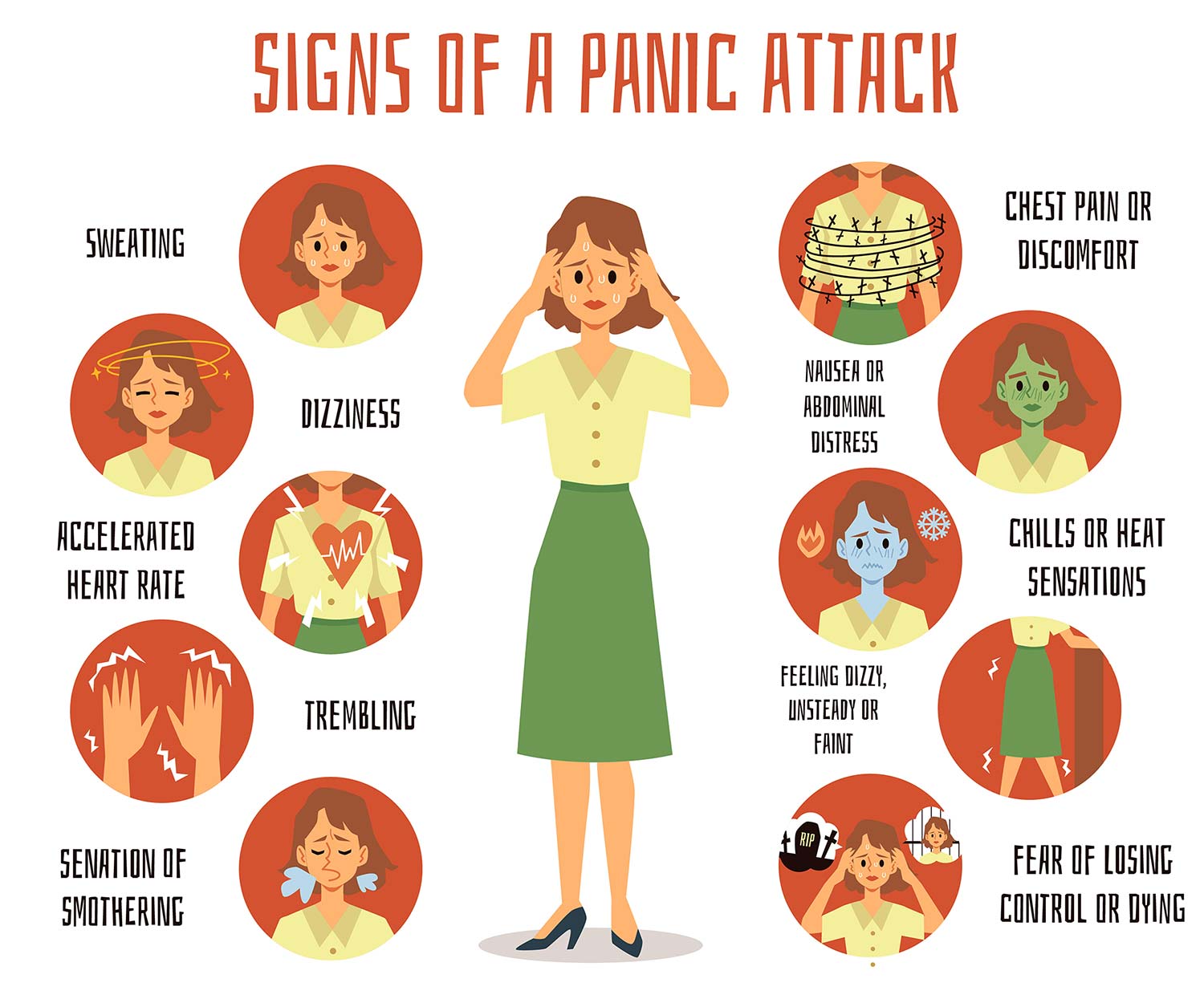
Signs of a Panic Attack
Below is a list of some of the symptoms that can be experienced:
-
Palpitations, pounding heart, or accelerated heart rate
-
Sweating
-
Trembling or shaking
-
Shortness of breath or difficulty breathing
-
Chest pain, pressure, or discomfort
-
Nausea, stomach cramping, or other stomach problems
-
Choking sensations
-
Tingling or numbness in parts of the body
-
Hot flushes or chills
-
Feeling detached from things going on in the environment
-
Feeling detached from the body
-
Thoughts of losing control or going crazy
-
Sense of impending doom or danger
-
Fear of dying
How Long Do Panic Attacks Last?
A panic attack can typically last between 5 to 20 minutes, reaching a peak of symptoms within about 10 minutes. In extreme cases, the symptoms may last for more than one hour.
Since panic attacks cannot always be predicted, they can significantly affect everyday life.
Panic can lead to serious disruptions in daily functioning and make it difficult to cope with normal everyday situations that may trigger feelings of intense panic and anxiety.
Some people with panic disorder may even avoid leaving the house for extended periods of time for fear of having a panic attack in public.
Diagnosis
Many people may seek medical support after having a panic attack since they believe they are having a heart attack. It is reportedly difficult to differentiate between the symptoms without the help of a medical professional.
A healthcare professional may perform several tests at an appointment to see if a heart attack caused the symptoms. They may run blood tests to rule out other conditions that can cause similar symptoms and use an electrocardiogram (ECG) to check heart function.
Suppose it is determined that the person does not need emergency care. In that case, they should be referred back to their primary care provider, who should perform a mental health examination and ask about the symptoms being experienced.
All other medical disorders should be ruled out before the primary care provider makes a diagnosis of panic disorder. A mental health professional can also diagnose panic disorder using the Diagnostic and Statistical Manual of Mental Disorders (DSM-5).
The DSM-5 defines panic attacks as an abrupt surge of intense fear or discomfort that reaches a peak within minutes, during which time four or more of the panic attack symptoms occur.
At least one panic attack should be followed by a month or more of the person fearing that they will have more attacks and causing them to change their behavior, which often includes avoiding situations that may induce a panic attack.
During the diagnosis process, the professional must rule out other potential causes for the panic attack, for instance:
-
The attacks must not be due to the direct physiological effects of a substance or general medical condition.
-
The attacks are not better accounted for by another mental disorder, including social phobia, another specific phobia, obsessive-compulsive disorder (OCD), posttraumatic stress disorder (PTSD), or separation anxiety disorder.
Biology and Psychology of Panic
Panic attacks can be seen as a blend of biological, emotional, and psychological reactions, the emotional response being fear.
Biological reactions: fight or flight
When there is real or imagined danger, the body goes through a series of changes known as the fight or flight response. Some of these biological changes include:
-
Increased heart rate
-
Increased rate and depth of breathing
-
Increased sweating
-
Muscle tension
When anxious or afraid in situations where there is no real danger, the body sets off an automatic biological alarm, and the fight or flight response kicks in.
In this case, this would be a false alarm since there would be no danger to prepare the body for.
In those with panic disorder, the body will still respond as if there is an imminent threat to life and cause all the same biological reactions as the fight or flight response.
Biological reactions: hyperventilation and anxious breathing
When breathing in, we obtain oxygen that can be used by the body, and we breathe out to expel carbon dioxide.
When someone is anxious, the optimal level of carbon dioxide is disrupted because the person is beginning to hyperventilate or breathe too much.
If the body cannot return the carbon dioxide levels to an optimal range, this can result in experiencing further symptoms such as dizziness, light-headedness, weakness, and muscle stiffness.
This can be very distressing for those with panic disorder as it may be perceived as a sign of an oncoming attack.
Psychological reactions: thoughts associated with panic
People who experience panic attacks are usually good at noticing physical symptoms. They may constantly be scanning their bodies for these symptoms, which can become an automatic habit for them.
Once they have become aware of any symptoms, these are often interpreted as signs of danger. This can result in them thinking that there is something wrong with them, that they are going crazy, losing control, or that they are going to die.
Some of the types of unhelpful thinking patterns that often occur with panic disorder include:
-
Catastrophic thoughts about normal or anxious physical sensations.
-
Over-estimating the cost of having a panic attack, such as thinking the consequences of having a panic attack will be very serious or very negative.
-
Over-estimating the chance that they will have a panic attack.
Psychological reactions: behaviors that keep panic going
When experiencing or expecting anxiety, people can act in certain ways to control the anxiety. A way in which this can be done is by keeping away from situations where they may expect to have a panic attack.
This is called avoidance and can include:
-
Avoiding situations where panic attacks have occurred in the past.
-
Avoiding situations from which it is difficult to escape or where it may be difficult to seek help, such as public transport or shopping centers.
-
Avoiding situations or activities which may result in similar physical sensations, such as physical activity or drinking coffee.
A second behavioral response may be to behave differently or to use safety behaviors to prevent their negative predictions of the anxious situation from happening, such as:
-
Making sure there is an escape route nearby.
-
Carrying specific panic medications everywhere
-
Ensuring there is a wall nearby to lean on
-
Seeking reassurance from others
-
Listening to music, such as using headphones on public transport
Although these behaviors may not seem harmful to begin with, if someone with panic disorder becomes dependent on these behaviors, they can become even more distressed if, one day, these safety behaviors are not possible or cause significant impairment to their daily life.
The Cycle of Anxiety
The essence of anxiety is worrying about potential threats and then trying to cope with future events that are believed to be negative.
Someone with panic disorder may do this by paying more attention to the possible signs of potential threats and looking internally to see whether they can cope with that threat.
When they notice any anxious symptoms, they may believe they cannot cope with the situation and become more anxious.
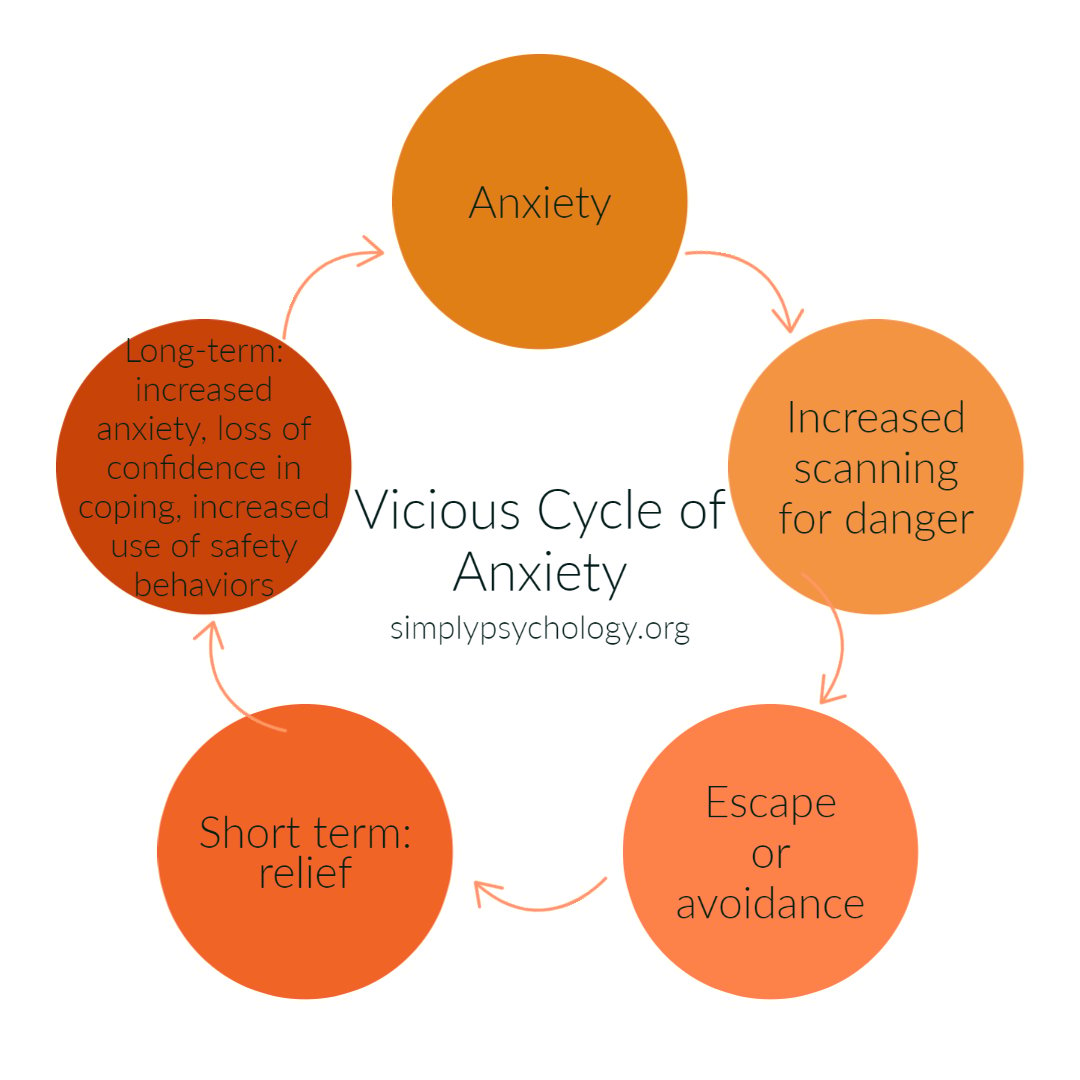
How avoidance contributes to anxiety
When feeling anxious, it makes sense to want to do things to reduce the anxiety. Sometimes, people with anxiety try to reduce their anxiety by avoiding the feared situation altogether.
This avoidance can provide instant short-term relief for those with anxiety because they have not put themselves in a distressing situation.
Whilst avoidance may make anxiety better in the short-term, it can make anxiety worse in the long-term, as the confidence about coping with the situation will be reduced.
If the anxiety-provoking situation is always avoided, it can be even more challenging to face in the future.
How safety behaviors contribute to anxiety
As well as avoidance, people with anxiety may use safety behaviors to help them cope with their anxiety. Examples of safety behaviors include reliance on carrying medication everywhere, the security of a phone, having an exit plan, or bringing a friend along for every stressful situation.
These safety behaviors can also play a part in the cycle of anxiety. When someone depends on these behaviors, they do not learn that their bodily sensations and emotions are not dangerous.
They may not learn that distressing emotions such as panic tend to simmer down over time on their own. Instead of dealing with the emotions, the safety behaviors suppress them.
If the person’s fears do not come true, the person may mistakenly thank the safety behaviors for this. The behaviors can be heavily relied upon, and if they were not available in a situation, the anxiety could increase even more.
Safety behaviors do not allow the person to learn to cope with their anxiety or test their fears directly.
Reversing the vicious cycle of anxiety
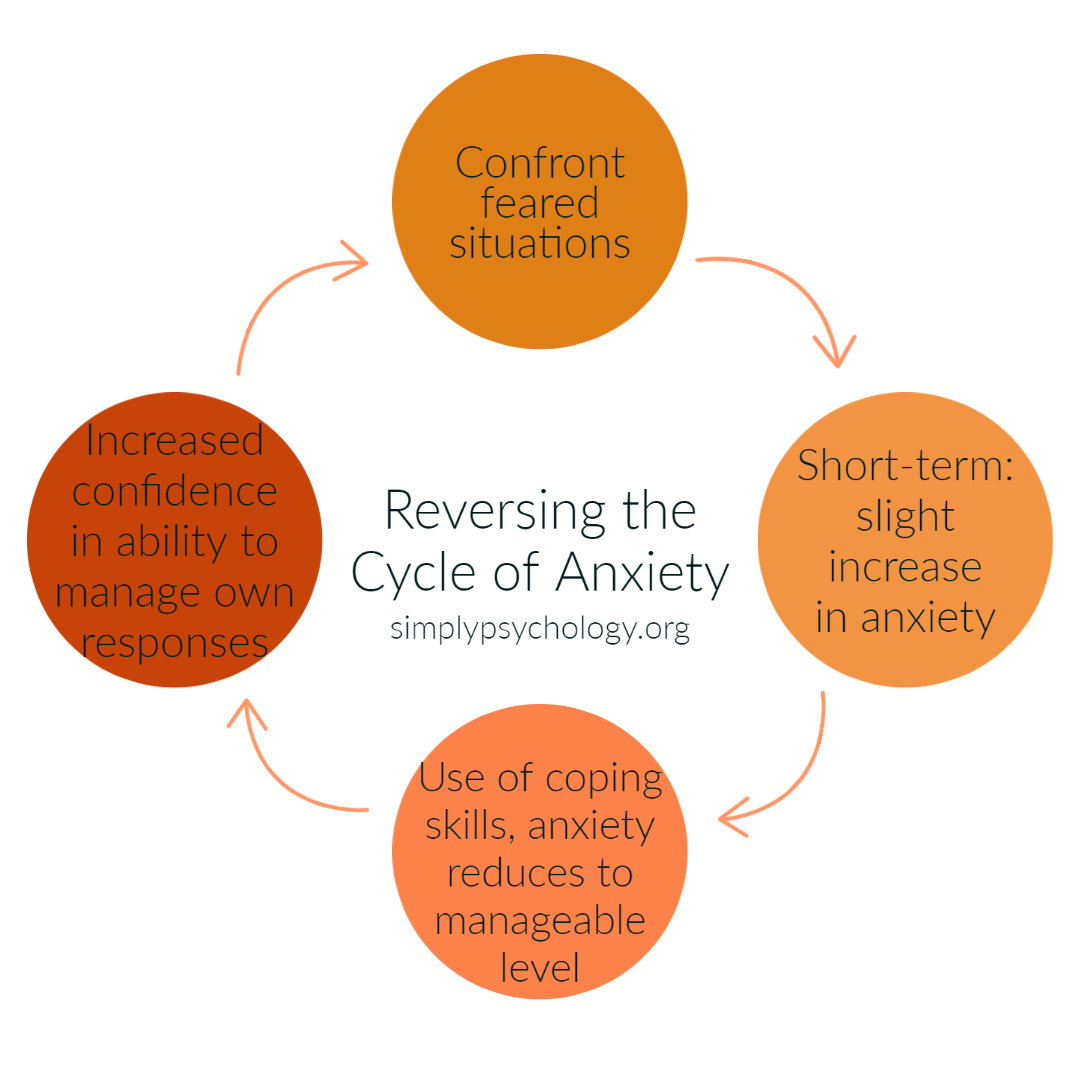
As previously discussed, vicious cycles have been shown to play a role in maintaining anxiety. However, this can be turned around to create a positive cycle that can help to overcome anxiety.
An important step to overcoming anxiety is to confront the feared situations gradually. At first, this may increase anxiety in the short-term.
Eventually, this should lead to an improved sense of confidence, which will help those with panic disorder to reduce their anxiety and get back to the situations that are important to them.
Some may think that jumping in at the deep end and facing the biggest fear first is best. However, many people prefer to take it one manageable step at a time, known as ‘graded exposure.’
This is where the person will start with situations that are easier to handle before working their way up to the more challenging tasks. This may cause a slight short-term increase in anxiety, but it enables people to understand that their anxiety level will peak and come down gradually, allowing them to build up their confidence in coping with anxious situations slowly and challenge their fears about each situation.
By doing this in a structured and repeated way, the person with panic disorder can have a good chance of reducing their anxiety about many situations.
This is called graded exposure therapy which is commonly used in Cognitive Behavioural Therapy (CBT).
Treatment
Cognitive behavioral therapy (CBT)
CBT is a type of psychotherapy that can help people with panic disorder learn new ways of thinking and reacting to anxiety-provoking situations. CBT focuses on both behavioral and thought processes in understanding and controlling anxiety.
Together with the therapist, negative and unhelpful thinking patterns can be identified. This can include uncontrolled worrying thoughts about what may or may not happen if the individual has a panic attack.
Unhelpful behaviors can also be identified, such as avoiding certain situations or using safety behaviors.
As part of this process, the therapist helps their client to challenge their unhelpful patterns of thinking and behavior and replace these thoughts with more realistic and helpful ways of thinking.
Panic-focused psychodynamic psychotherapy (PFPP)
Based on certain psychoanalytic concepts, PFPP aims to uncover the underlying conflicts and experiences which may have influenced the person’s development of panic and anxiety.
The psychoanalytic concepts assume that early relationship experiences shape people and that unconscious motives and psychological conflicts are at the core of certain current symptoms and behavior.
The belief is that an unconscious mind is a hiding place for painful emotions, with defense mechanisms keeping these emotions hidden.
However, if these emotions can be brought to the conscious mind through PFPP, it is thought they can be dealt with more adaptively, and the symptoms of panic disorder can be eliminated or reduced.
Medication
The primary reason someone with panic disorder may be taking medication is to help reduce the symptoms of a panic attack.
Medication may only be prescribed for a short period of time to control the symptoms whilst utilizing other strategies such as those learned in therapy.
Medication for panic disorder usually falls under two categories: antidepressants and anti-anxiety drugs:
-
Selective serotonin reuptake inhibitors (SSRIs) are commonly prescribed antidepressants for anxiety disorders as they act on the neurotransmitter serotonin, a chemical associated with mood and feelings of happiness. Examples of SSRI medications are Zoloft (Sertraline) and Prozac (Fluoxetine).
-
Serotonin and norepinephrine reuptake inhibitors (SNRIs) are another type of antidepressant that, as well as acting on serotonin, also work on the neurotransmitter norepinephrine, a chemical associated with helping the body respond to stress. The SNRI Effexor XR (Venlafaxine) is approved to treat panic disorder.
-
Benzodiazepines, a type of anti-anxiety medication, act as a depressant on the central nervous system (CNS). This type of medication can work quicker and stronger than antidepressants but is generally used only on a short-term basis as they can cause dependence. Xanax (Alprazolam), Klonopin (Clonazepam), and types of benzodiazepines that are approved for the treatment of panic disorder.
Finding the right medication that works best for the person with panic disorder can take time. It is useful to keep in mind that it can also take several weeks since first starting a medication to notice an improvement in symptoms.
All medications also come with the risk of side effects, so these should be discussed with a doctor before taking any.
However, it is important to keep in mind that taking medications for panic attacks may become a form of safety behavior that maintains the vicious cycle of the problem. Working with a therapist collaboratively may be the best way to manage panic disorder.
How to cope
There are several methods that someone can use to help them cope with their panic attacks.
Relaxation
Relaxation exercises have been found to be beneficial for those with panic disorder. This can include partaking in yoga, meditation, mindfulness, and deep breathing exercises.
During or immediately after a panic attack, it may be useful to complete relaxation exercises to help manage or recover from the intense feelings quicker.
A technique known as progressive muscle relaxation is a method wherein individuals will purposely tense a muscle before releasing it after a few seconds so that this muscle group feels relaxed.
Someone with panic disorder could start by tensing and relaxing their feet, working their way up their body through their legs, arms, and face until their whole body feels more relaxed and focused.
Likewise, visualization is another relaxation technique that can be used during a panic attack.
This is where individuals imagine they are in an environment they find relaxing, aiming to calm down their anxious and panicked symptoms.
Exercise
A study investigated the effects of exercise, specifically aerobic exercise, on anxiety symptoms in people with panic disorder.
They found that regular aerobic exercise can promote a reduction in anxiety levels (Lattari et al., 2018).
Sleep
People with panic disorder often report having trouble sleeping. This deprivation can result in greater panic symptoms, so it is important to get plenty of sleep.
Also, it is important to try to stick to a regular sleeping schedule, such as settling down for bed at the same time every day to get into a consistent routine.
Support from others
Support from others during a panic attack can greatly benefit the individual.
Emotional reassurance helps them feel calmer and less isolated. Validating their experience normalizes their feelings and reduces the fear of losing control.
Physical assistance, like encouraging deep breathing or providing water, helps them regain control over their body.
Distractions and grounding techniques shift their focus away from the panic attack, promoting calmness.
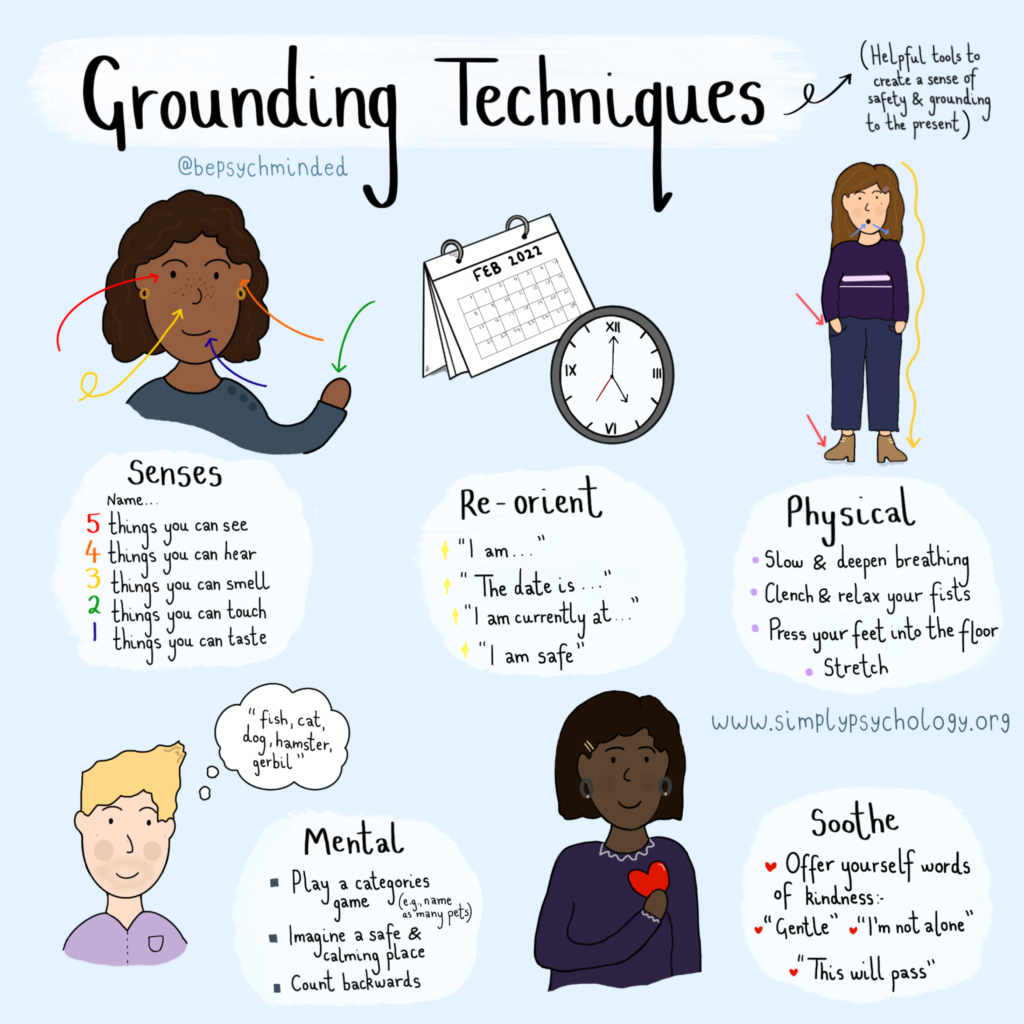
Supportive individuals can also encourage seeking professional help for long-term management.
‘She asked, ‘Do you need me to do anything for you right now?’… I just needed to be by someone. I didn’t need them to say anything to me but to be by someone else who was grounded at the time who clearly was not experiencing the panic that I was experiencing. And eventually, that got me to a place where I could mirror her… I was just trying to get myself to that place.’
Tony
Overall, having someone there can provide comfort, understanding, and practical assistance, making panic attacks more manageable.
Keeping a journal
It may be useful to keep a journal to track when panic attacks occur, whether there were any known triggers, and to record symptoms (physical and emotional).
As well as this, documenting any coping strategies that helped cope with the symptoms can be useful to determine what works for the individual.
Do you need mental health support?
USA
Contact the National Suicide Prevention Lifeline for support and assistance from a trained counselor. If you or a loved one are in immediate danger: https://suicidepreventionlifeline.org/
1-800-273-8255
UK
Contact the Samaritans for support and assistance from a trained counselor: https://www.samaritans.org/; email jo@samaritans.org .
Available 24 hours a day, 365 days a year (this number is FREE to call):
116-123
Rethink Mental Illness: rethink.org
0300 5000 927
References
American Psychiatric Association. Diagnostic and Statistical Manual of Mental Disorders. 5th edition. American Psychiatric Association; 2013.
Hutton, M. (2020, January 1). MY FIRST PANIC ATTACK | What it Feels Like to Have a Panic / Anxiety Attack. [Video]. YouTube. https://www.youtube.com/watch?v=dK9D-2kAj9o&ab_channel=MattHutton
Lattari, E., Budde, H., Paes, F., Neto, G. A. M., Appolinario, J. C., Nardi, A. E., Murillo-Rodriguez, E. & Machado, S. (2018). Effects of aerobic exercise on anxiety symptoms and cortical activity in patients with panic disorder: a pilot study. Clinical practice and epidemiology in mental health: CP & EMH, 14, 11.
Locke, A. B., Kirst, N., & Shultz, C. G. (2015). Diagnosis and management of generalized anxiety disorder and panic disorder in adults. American family physician, 91(9), 617-624.
National Institutes of Mental Health. Panic disorder: When fear overwhelms.
Nathan, P., Correia, H., & Lim, L. (2004). Panic Stations! Coping with Panic Attacks. Perth: Centre for Clinical Interventions.
Whatz It Feel Like? (2019, February 6). My panic attacks feel like I am dying [Video]. YouTube. https://www.youtube.com/watch?v=VHvkdbwQNBw&ab_channel=WhatzItFeelLike


